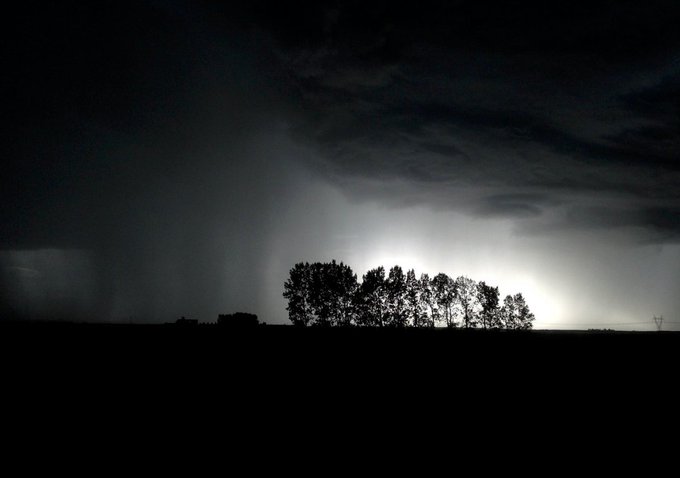During these first days of April snow falls outside making it easier to stay inside in the time of coronavirus.
Another April some time ago, while perusing Richard MacFarlane’s Twitter musings, I ran into the phrase “Laethanta na Riabhaiche,” Gaelic for “the borrowed days.”
Richard shares “word of the day” posts on Twitter and on April 2, 2018 he wrote:
Word(s) of the day: ‘Laethanta na Riabhaiche’, ‘The Borrowed Days’; the name given in Irish folklore to the first three days of April, on the grounds that their weather was so bad it seemed to have been loaned to March (or vice-versa). See tweet
If you like interesting words and an original take on the goings-on of the world, follow Richard on Twitter.
As April begins anew, Richard’s old post came to mind. The borrowed days.
I asked Michael Chamber about this time of the year and he wrote:
“We have all heard of March winds and April showers, and everyone knows that ‘March winds and April showers bring forth May flowers’, first referenced in the prologue of the Canterbury Tales.
March and April have long been the subject of folklore with the end of March characterized as stormy and inauspicious for new endeavors, while April announces Spring, new life, optimism.

One ancient tale for these times is ‘Laethanta na Riabhaiche’ Gaelic for “The Borrowed days”.
The original Irish fable tells the story of an old brindled cow, An tSean-Bhó Riabhach. She boasted that the stormy and harsh weather of March would not harm her.
Unfortunately, this upset fearsome March, who borrowed three days from April and used them to finish off the poor cow by killing and skinning her, nice!
This led to the first three days of April to be called different names:
- The borrowed days
- Borrowing days
- The skinning days
- Laethanta na Riabhaiche
Moving to the North, towards Ulster, the story develops with not three but nine days borrowed.
One ancient tale recalls how a cow was joined by a blackbird and a stone chatter and together the three boasted they could outwit March.
In order to punish them, March took three days for each of them, nine in total to deal with their defiance
Trí lá lomartha an loinn’
Trí lá sgiuthanta an chlaibhreáin
Agus trí lá na bó riabhaighte
Translated as
Three days for fleecing the black-bird,
Three days of punishment for the stone chatter,
And three days for the grey cow.
It turns out this story has appeared in several cultures.
The Spanish story about the borrowing days is that a shepherd promised March a lamb if he would lessen the ferocity of the wind so the shepherd could look after his sheep without the howling winds.
March agreed to his request but the shepherd reneged on his agreement and refused to deliver the lamb.
March took his revenge by borrowing three days from April and sent the most fierce winds that he had ever blown before to punish the shepherd.
In Scottish folklore we find April borrowing three days from March to extend his power, as this excerpt from a Scottish proverb illustrates:
March borrowit from April
Three days, and they were ill:
The first was frost, the second was snaw,
The third was cauld as ever’t could blaw.’
After King James I died at the end of March during a storm off the Scottish coast, a writer of the day noted that this catastrophic event would be forever remembered as the ‘storm of the borrowed days’.”
The borrowed days. May they not last long. And may April be nice.
Carl Kruse
contact: carl AT carlkruse DOT com
Homepage
P.S. Nothing to do with borrowed days but a quick poem on dusk here.
P.P.S And another quick post on Spring.
Just seeing this now and while a touch late, I wanted to say I love the words that capture the concept.
I love the idea as well. Thanks for your feedback and thoughts Tom.
Carl Kruse